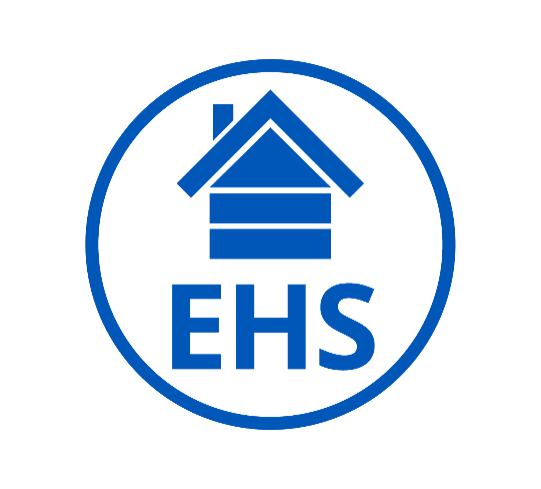Title Page
-
Conducted on
-
Prepared by
-
Location
- Berry Eaton Socon
- Berry Flitwick
- Berry Milton Keynes
- Berry Norwich
-
Project
PSSR
Information
-
Equipment/Facility
- New equipment
- Modified equipment
- New facility
-
Equipment name
-
Equipment Serial Number
-
Location of Equipment
-
Facility name
-
PSSR Team Members
PUWER and MC EQPT Risk Assessment
-
Has PUWER Risk Assessment been completed?
-
Is equipment CE Marked?
- Yes
- No
- N/A
-
Has MC-EQPT Risk Assessment been completed?
Lockout/Tagout
-
Is the machine capable of being locked out?
- Yes
- No
- N/A
-
Have the LOTO points been clearly identified?
-
Are there any special lockout devices needed?
-
Have they been ordered and distributed to the appropriate personnel?
-
Have all staff been properly trained on the lockout procedures?
Mechanical Hazards
-
Are equipment disconnects and operating controls labeled?
-
Are the start and stop controls within easy reach of the operator?
-
Is there plant maintenance for the equipment?
-
Are maintenance / technical personnel trained to perform the plant maintenance?
-
Can the machine be oiled without removing the safeguards?
-
Is there more than one operator?
-
Are separate controls provided?
-
Are Emergency Stops working and accessible to the operator?
Machine Guarding
-
Have all pinch points and points of operation been properly guarded?
-
Have all chains and sprockets been properly guarded?
-
Have all pulleys and belts been properly guarded?
-
Have augers (if present) been properly guarded?
-
Are all machine guards securely attached?
-
Are interlocks prohibited from being bypassed if applicable?
-
Test all interlocks to ensure functioning properly if applicable?
Electrical
-
Is the machine wired (main power cable not internal cabling) according to UK regulation?
-
For new building / site change has all electrical wiring been completed and certified to necessary UK regulation?
-
Is the machine or equipment grounded?
-
Is the power supply correctly fused and protected?
-
Will additions or modifications require an Arc Flash analysis?
-
Are all electrical connections secured, cords only the length necessary, conduit only used where required (no cords running through walls, under doors, etc)?
-
Is equipment free of any temporary extension cables?
-
If temporary extension cable is required it is only allowed for only 90 days and please note the follow up required.
Personal Protective Equipment (PPE)
-
Has PPE Hazard Analysis been conducted for new jobs?
-
Is required PPE available and issued to operators?
-
Have operators been properly trained in the use and care of required PPE?
Noise
-
Have appropriate measures been taken to safeguard workers against noise hazards?
-
Has an area survey been conducted?
-
If noise is above 85 dB, has noise reduction measures been considered?
Evacuation/Egress and Fire
-
Have existing means of egress remained unobstructed / unchanged?
-
Have exit routes been rerouted if necessary?
-
Have employees been trained in new exit routes?
-
Has the emergency evacuation drawing been updated?
-
Have adequate new / additional emergency exits been added?
-
Have all new / added emergency exits been designated by appropriate signage/lighting?
-
Are new sprinkler systems operational and tested?
-
Fire Extinguisher accessible and adequately marked?
-
Have adequate new / additional Fire Alarm call points been included?
-
Have adequate new / additional Fire Alarm sounders and/or beacons been added?
Ventilation
-
Does the new equipment generate hazardous vapors/gasses/fumes which will require additional ventilation?
-
Has ventilation been installed?
-
If ventilation has not been installed, have employees been instructed in temporary hazard abatement procedures?
Ergonomics
-
Do all necessary interaction points with the machine comply with ergonomic principles?
-
Is head room adequate at all points around the equipment?
-
Have any identified ergonomic hazards been corrected?
-
If manual handling is required to load/unload parts from the machine/equipment has a manual handling risk assessment been completed?
-
For new building or changed use building have 5S principles been applied?
Confined Spaces & Hazardous Locations
-
Has the new equipment / building (or change to) created a hazardous location?
-
What is the nature of the hazard?
- Flammable
- Toxic
- Extreme temperature
- Confined space
- Other
-
Identify hazard
-
Are all hatches and other means of entry labeled as confined spaces?
-
Have space specific entry procedures been developed?
-
Have employees been trained on entry procedures?
Fall Protection
-
The new equipment will not create a situation in which employees must work at height above 1.2m and outside of a guard rail or provided step platforms?
-
Has appropriate fall protection equipment been provided to employees?
-
Have employees been trained in the use of required fall protection equipment?
-
No slip/trip/fall (same height) hazards created?
-
For new / changed buildings has access to height (roofs/silos/gantries etc) been considered?
-
For new / changed buildings do areas requiring working at height (roofs/silos/gantries/rooflights etc) have suitable protection (barriers etc)?
-
For new / changed buildings has access to height (roofs/silos/gantries etc) been restricted with suitable locked system?
-
For new / changed buildings has the site Working at Height Management Plan been updated?
Chemical / Substance Hazard Communication (COSHH)
-
The new equipment has not introduced any new hazardous chemicals into the facility?
-
Any new chemicals / substances required for the machine / equipment have been added to the COSHH system?
-
Have employees been trained in the hazards and protective measures for the new chemical?
Training
-
Does the new/modified equipment require additional process training?
-
Has the training been conducted?
-
Is the training matrix updated with any new training?
Air Permits
-
Has equipment received any necessary air permits?
-
Has a standard operating procedure been modified or created to control the equipment per regulations?
-
Does the facility have spare/redundant critical equipment to keep equipment running within compliance standards?
Wastewater Compliance
-
Has the equipment received the necessary wastewater permits and/or notifications?
-
Has a standard operating procedure been modified/created to control the equipment to not impact wastewater?
-
Is wastewater treatment operations prepared to handle the impact of this process change?
SWERP/Storm water
-
Are secondary containment and/or storm water controls in place?
-
Has the SWERP plan been updated, including site maps?
Environmental
-
Has the machine / equipment been evaluated for Environmental Aspects and Impacts?
Waste/Chemical Notification /Utilities
-
Are the procedures in place to handle the waste (hazardous or non-hazardous) from the process change?
-
Has notification to regulators occurred to address legal requirements (if required)?
-
Are appropriate back flow connections installed to prevent contamination of potable water?
-
Are the appropriate mechanical and procedural systems installed to minimize energy/water usage?
Quality and Food Safety (BRC)
-
Is the new equipment designed and manufactured to be easily cleaned in part contact areas?
-
Is there a standard operating procedure / checklist in place for maintenance?
-
Is there a standard operating procedure / checklist in place for line cleandown?
-
Have all items necessary been added to Glass & Brittle Plastics Register?
-
Have all items necessary been added to Sharps Register?
-
Have all necessary QC forms been raised?
-
Have all necessary material forms been raised?
-
If in-line testing (camera/leak etc) fitted has its operation been verified (i.e. confirm it rejects failed parts)?
-
Please add any other comments below:
Other Reviewed Items
-
Please add any other items reviewed as part of PSSR that were not considered above.
Completion
-
Comments/Recommendations
-
Safe and ready for commissioning/startup?
-
Engineering
-
Safety
-
Quality
-
Operations







